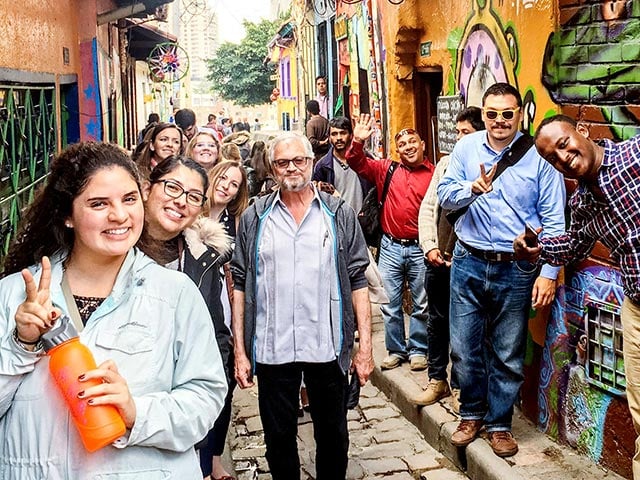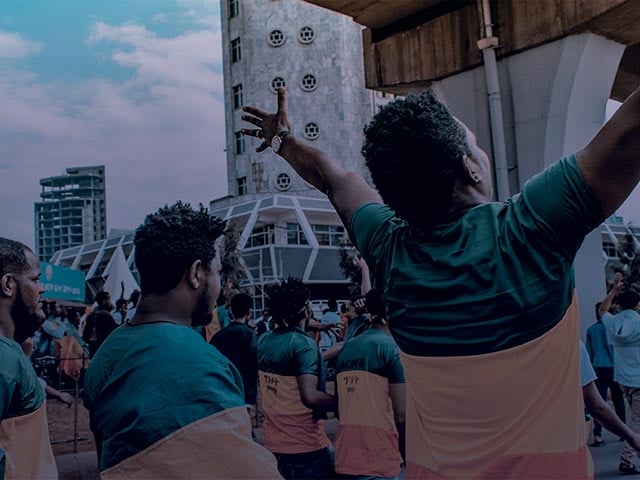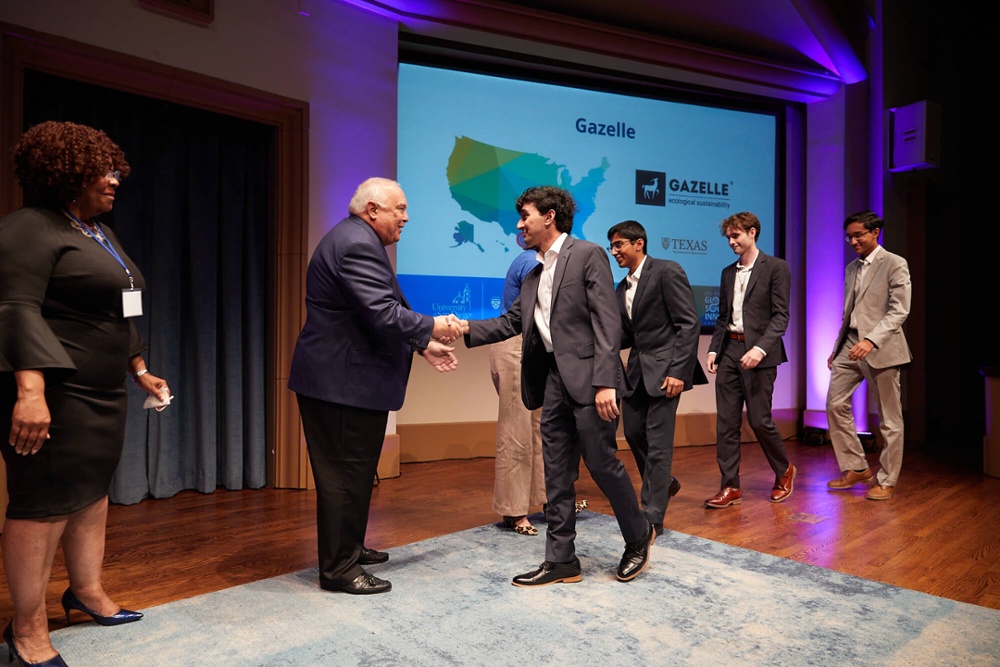6 Key Characteristics of a Social Innovation, as Told by Colombian Social Enterprises

6 Key Characteristics of Social Innovation, as Told by Colombian Social Enterprises
The following blog post was contributed by MA in Social Innovation student Alexandra Steinhaus.
Social innovation brings community and collaboration to the forefront of problem solving. It’s a movement that is empowering people around the world to strengthen their local and global communities in new ways. During our spring break, a group of Kroc School students traveled to Bogotá, Colombia, where we connected with some of the most inspiring social innovators.
Before I reveal what it takes to be a true social innovator, it’s important we share an understanding of what that term means. As a Master of Arts in Social Innovation (MASI) student, I’ve explored the many definitions of “social innovation” and have even written one of my own. Since we are examining it in the context of Colombia, I will use a definition shared by Uniminuto, a nonprofit Catholic university in Colombia whose heart and soul is centered around social innovation. Uniminuto defines social innovation as “a new solution, product, service, practice or management model to a community problem or need.”
Now, let’s explore six key characteristics of a successful social innovation, as told by the social enterprises we connected with in Colombia, and illustrated by the beautiful street art of Bogotá.
Addresses Real Needs of People in a Community
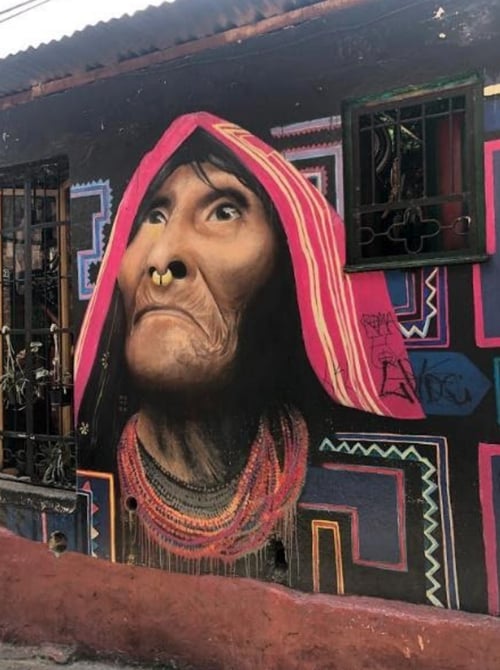
People are at the core of social innovation. At Fundación Biblioseo, they empower local experts to design social innovations for their community. These experts are bright, passionate youth, and they are developing projects that address the specific problems their rural community faces. The Biblioteca de la Creatividad (creative library) provides a space for the youth to be entrepreneurs, community advocates, and lifelong learners. They’ve developed revenue-generating projects that align with their interests such as art, music, the environment and farming. Their efforts have been so successful that they are building a second Biblioteca using bricks made from recycled plastic. Fundación Biblioseo shows the power of a social innovation when it is created for a community, by a community.
Requires a Deep Understanding of the Problem

Social innovators such as Missy Christie, Founder and Executive Director of Conviventia, address complex and interconnected problems by deeply understanding the larger system they operate in. Conviventia empowers over 10,000 people a year through their job training programs, entrepreneurship centers, and community schools. Their mission is to alleviate poverty, and by examining this problem holistically, they know that increasing access to jobs is just one component they need to address. By working alongside communities, Christie realized the importance of ensuring every person feels their existence has worth, value, and dignity. Conviventia maintains a continuous understanding of their communities’ challenges by listening to stakeholders, frequently asking for feedback and working with people of diverse perspectives.
Localizes and Humanizes the Problem
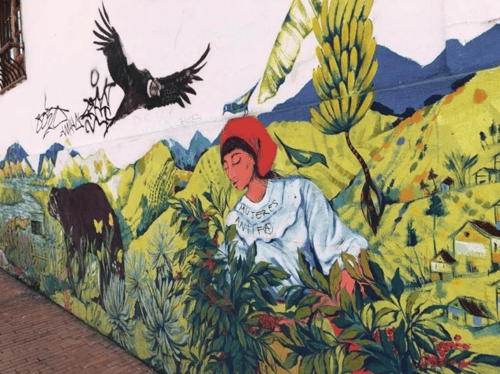
Communities are as complex as their problems, and each community has distinct challenges and needs. Captain José Escalante learned this valuable lesson when La Unidad Policial para la Edificación de la Paz (UNIPEP), the Police Unit for Peacebuilding, was established in April 2016. After the Colombian government and the Revolutionary Armed Forces of Colombia (FARC) signed the peace accord, UNIPEP was created to promote peace across the country. Two groups that were once entrenched in hatred and violence now had to come together to strengthen the people of Colombia. As Captain Escalante interacted with former FARC members, they learned to see each other as fellow human beings rather than enemies. This change of perception allows UNIPEP to design much different initiatives than they may have before. When it came time support each territory, they learned quickly that efforts in the city of Bogotá could not be replicated in the rural areas. Now, officers in each territory work alongside their communities to design initiatives that work best for them.
Builds Trust and Collaborates With the Community in Need
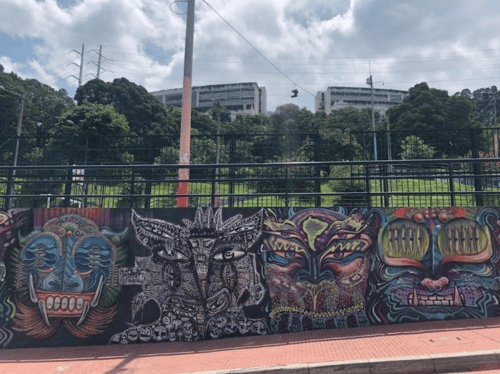
Social innovators must collaborate with the many stakeholders that make up a community, and to facilitate authentic and effective dialogue, the community members must trust the social innovator. El Centro de Investigación y Educación Popular (Cinep), the Center for Research and Education, works with groups all across Colombia to develop new methods for promoting peace and development. In Caldono, a town that endured the most guerilla attacks in Colombia, Cinep helped ex-combatants reintegrate into the community. They brought together the entire community to design a reconciliation plan, which included cleaning a hill that was filled with old mines and installing a sculpture that says “I Love Caldono.” Reinventing a physical space that was once filled with fear and violence helped many people start to heal from the trauma. Cinep suggests bringing together diverse groups, including those that may be competing for resources or power. In these groups, you can establish a collective understanding by incorporating art, personal experiences and trust into the collaboration process.
Is Sustainable and Scalable
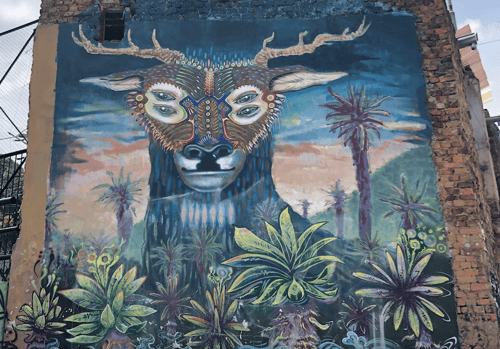
Sustainable social innovations are embedded within the community and are financially stable; the innovation must operate smoothly even if the original designers walk away. Since the best social innovations are localized, they will benefit more people when their models are scalable. Uniminuto is a great example of this concept. Uniminuto brings affordable and high-quality education, entrepreneurship, and innovation to vulnerable communities across Colombia. Their university consists of physical campuses and virtual programs around the country, and each program is developed to fit the needs of the area it serves. They use a variety of tactics to achieve financial sustainability, including public-private partnerships and a flexible tuition rate. In larger, wealthier cities, a higher tuition rate subsidizes the rate in rural towns. From their Centro de Cultura, Arte y Tradiciones (Culture, Art, and Tradition Center) to their Parque Científico de Innovación Social (Social Innovation Science Park), every program they develop prioritizes the importance of achieving sustainable and scalable solutions alongside the communities they are serving.
Adapts Constantly

As communities' needs and problems change, social innovations must adapt. Oftentimes, social innovators believe they’ve designed the perfect solution only to learn another vital piece of information that completely alters their direction. In the case of Investing Hope, their continual learning is improving their program and growing their organization. Investing Hope strives to create a future and hope for children in Colombia by teaching them about entrepreneurship, financial management and the importance of saving. Their public-private partnerships with foundations, churches and schools provide them with key insights and resources to expand and adapt their offerings to their clients.
Colombia’s Bright Future with Social Innovation
The social innovators we met in Colombia are strong, optimistic, and incredibly creative. They are each taking a new approach to solve localized problems in their communities in hopes of empowering individual youth and adults. They believe that empowered people strengthen their communities and advocate for more peaceful societies. While these social innovations are designed specifically for Colombia, their commonalities provide key learners for social innovators around the world.
At the Kroc School, we are educating for peace and social innovation. Ready to join us? Learn more about the Kroc School and its graduate programs.
Contact:
Justin Prugh
jprugh@sandiego.edu
(619) 260-7573

About the Author
The Joan B. Kroc School of Peace Studies (Kroc School) at the University of San Diego is the global hub for peacebuilding and social innovation. Founded in 2007, the Kroc School equips the next generation of innovative changemakers to shape more peaceful and just societies. We offer master's degrees in peace and justice, social innovation, humanitarian action, conflict management and resolution, and a dual degree in peace and law — programs that have attracted diverse and dynamic students from more than 50 countries. In addition to our graduate programs, the Kroc School is home to the Kroc Institute for Peace and Justice (Kroc IPJ). Founded in 2001, the Institute supports positive change beyond the classroom. Through groundbreaking research, experiential learning, and forward-thinking programs, the Kroc School and Kroc IPJ are shaping a future in which peaceful co-existence is the new normal.


